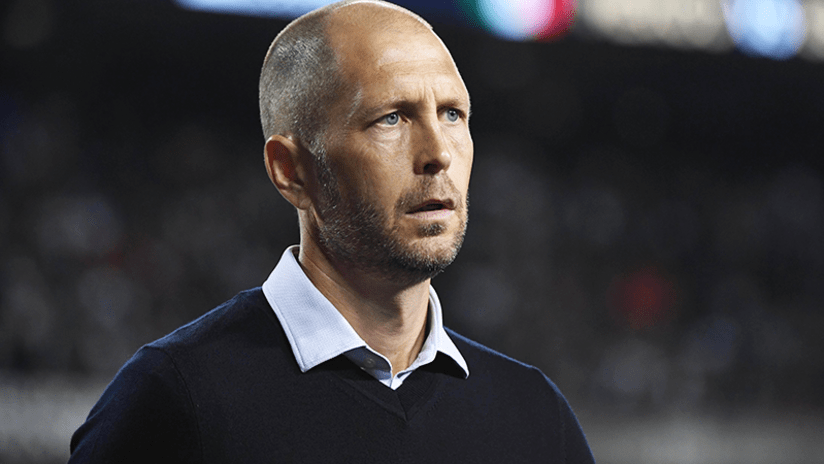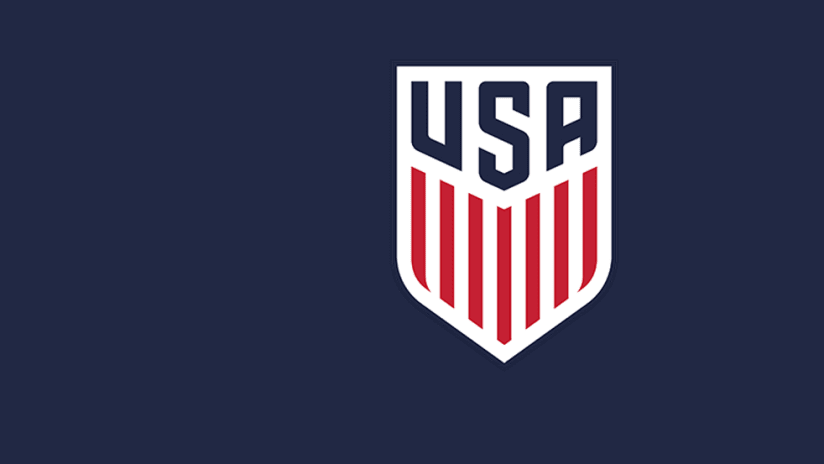This month’s U.S. men’s national team camp has shaped up as a showcase of the country’s rising wave of talent, with a program-record nine players currently participating in UEFA Champions League, several promising new faces — including some freshly-recruited dual-nationals — and an average age of just 21.
“It gives you a lot of optimism when you see some of these players,” said head coach Gregg Berhalter in a conference call with media this week. “How they've been performing at such a young age, [how] it would be great for us to get our hands on them, be able to work with them and start forming the team.”
That injection of young blood, he added, may also be accompanied by a shift towards a more assertive and up-tempo tactical identity.
“We want to take advantage of our athleticism,” said the coach, who will mark the two-year milestone in his post on Dec. 2. “So I want to see us be very aggressive on the defensive side of the ball, high-pressing teams. We think we have enough speed in the back to cover up for, or to be able to play a higher line.”
Many of the players called up this month have experience in a pressing system, be it at club level or as alumni of Tab Ramos’s tenure as US Under-20 national team coach, and Berhalter has talked about the strategy over the past year, albeit without often putting it into practice in match play. This month should offer him ample options for moving in that direction in terms of the age, skill and pedigree of the squad.
Most stateside observers will already be familiar with the likes of Tyler Adams, Sergino Dest, Weston McKennie, Christian Pulisic and Gio Reyna. Then add in newer arrivals like Yunus Musah, a pacey 17-year-old carving out a role at La Liga side Valencia, Wolverhamption Wanderers defensive midfielder/center back Owen Otasowie, FC Barcelona wide man Konrad de la Fuente and France-based striker Nicholas Gioacchini.
“I'd like our team to be nice and compact when we're pressing; offensively, we have a lot of a lot of skilled players,” said Berhalter. “You look at our outside backs, a tremendous amount of skill, when you think about our center midfielders, our wingers. I think we should be able to be very aggressive offensively, getting behind the opponent, really putting the opponent on their heels.”
His description of De la Fuente’s skillset is noteworthy in this regard.
“So we have a connection with the Barcelona coaching staff,” said Berhalter, “and one thing they're amazed at is what he gives them on the field. And what he gives them is this verticality, this ability to stretch the opponent, always making the opponent move backwards. And when you can do that, now you create space between the lines. He's relentless with his running behind the backline. And it’s something he’s really worked on.”
Asked about how he plans to fit his many talented options into a high-performing XI, Berhalter sounded eager to test out an array of partnerships and combinations to find his best lineups for a given situation.
Adams and McKennie have already demonstrated their versatility in central midfield (and occasionally elsewhere). Reyna, he emphasized, can patrol the wings or playmake centrally. Musah, a highly-rated talent who’s played for England at youth international level and is also eligible to represent Ghana and Italy, has usually worked wide right at Valencia, but will likely get a look in the U.S. engine room this month.
“With Yunus, it's interesting, because when you watch his games, he's playing wide right in a 4-4-2 and he's taking on the outside back, and he's running by the outside back, and he’s done a good job defensively,” said Berhalter, who also made sure to urge patience with the teenager. “But we still see him as a player that can potentially be better centrally, a box-to-box midfielder a little bit in the style of Weston in terms of covering ground, good speed.”
Beyond the information to be gathered on the training ground in Wales, the USMNT’s match opponents should provide useful data points. Gareth Bale’s Wales are a battle-tested group with high-end talent from some of Europe’s top leagues, while Panama were scheduled in order to “give a lot of our new guys an opportunity to see a Concacaf opponent and see what that looks like up close,” no small priority given that World Cup and Olympic qualifying, the Gold Cup and Concacaf Nations League semifinals and finals await in an intense 2020.







